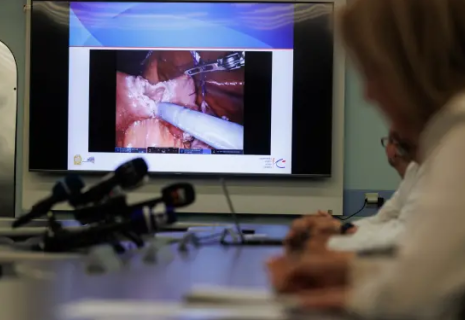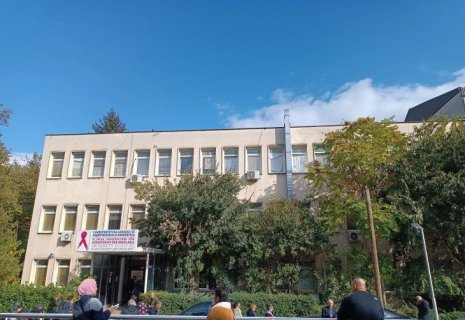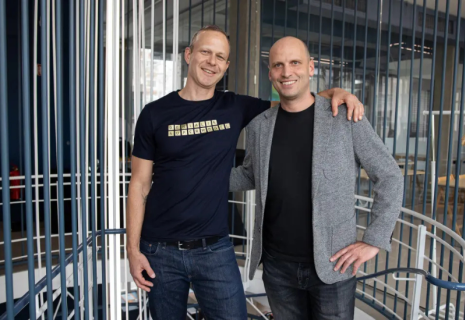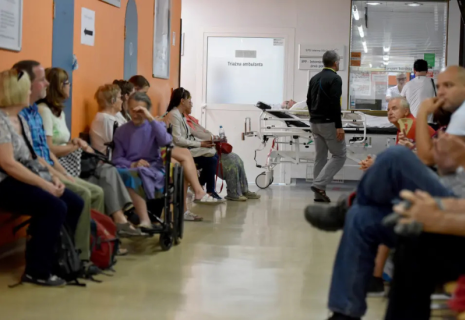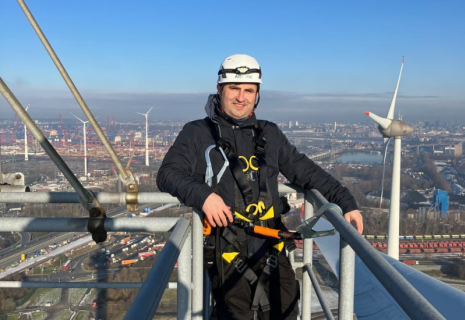
Slovenian researcher develops breakthrough endometriosis test
A long sidelined and underfunded area, women's health is the focus of work of US-based Slovenian researcher Polona Šafarič Tepeš. She is currently developing a breakthrough non-invasive test for endometriosis, a disease that affects millions of women.
Šafarič Tepeš, who obtained a PhD from the Ljubljana Faculty of Pharmacy, has been living and working in the US for the past decade. She is committed to bring to the forefront issues and conditions that have long been sidelined, particularly women's health and the understanding of women's biology, CE Report quotes The Slovenia Times.
Active in cancer research for a number of years, in recent years she has been working in a lab of Northwell Health, New York State's biggest healthcare network, where she studies endometriosis, a women's chronic disease that can cause infertility and severe pain.
Together with a group of researchers she is working on the development of a non-invasive test to diagnose endometriosis using menstrual blood cells. The new test would reduce the time needed to get diagnosed.
Endometriosis is a disease where tissue similar to the lining of the uterus grows outside the uterus and can cause chronic inflammation, scarring and severe pain. Even though it is a common condition, diagnostics takes time - on average it takes eight years and involves laparoscopy, an invasive surgery.
Fascinating endometriosis research
One of the key factors paving the way for the development of the new test was a breakthrough study which found that the cells of women suffering from endometriosis are associated with a high level of antioxidants. It is as if those cells "were on antioxidant steroids," Šafarič Tepeš says.
As a result the cells survive even in an environment that would have been fatal for many others. They also emit signals urging neighbouring cells to step up their protection.
Over the past two years, the research team succeeded in differentiating between women with endometriosis, healthy women and those who are likely to develop the condition in the future, which paves the way for the development of a non-invasive diagnosis test.A long sidelined and underfunded area, women's health is the focus of work of US-based Slovenian researcher Polona Šafarič Tepeš. She is currently developing a breakthrough non-invasive test for endometriosis, a disease that affects millions of women.
Šafarič Tepeš, who obtained a PhD from the Ljubljana Faculty of Pharmacy, has been living and working in the US for the past decade. She is committed to bring to the forefront issues and conditions that have long been sidelined, particularly women's health and the understanding of women's biology.
Active in cancer research for a number of years, in recent years she has been working in a lab of Northwell Health, New York State's biggest healthcare network, where she studies endometriosis, a women's chronic disease that can cause infertility and severe pain.
Together with a group of researchers she is working on the development of a non-invasive test to diagnose endometriosis using menstrual blood cells. The new test would reduce the time needed to get diagnosed.
Endometriosis is a disease where tissue similar to the lining of the uterus grows outside the uterus and can cause chronic inflammation, scarring and severe pain. Even though it is a common condition, diagnostics takes time - on average it takes eight years and involves laparoscopy, an invasive surgery.
Fascinating endometriosis research
One of the key factors paving the way for the development of the new test was a breakthrough study which found that the cells of women suffering from endometriosis are associated with a high level of antioxidants. It is as if those cells "were on antioxidant steroids," Šafarič Tepeš says.
As a result the cells survive even in an environment that would have been fatal for many others. They also emit signals urging neighbouring cells to step up their protection.
Over the past two years, the research team succeeded in differentiating between women with endometriosis, healthy women and those who are likely to develop the condition in the future, which paves the way for the development of a non-invasive diagnosis test.
The main challenge is launching clinical trials, which are costly and lengthy. Provided the team gets funding for them, the first trials could start within the next two years.
However, since endometriosis is a disease that can recur after surgery, the team is looking for biological mechanisms that would provide more sustainable solutions.
Šafarič Tepeš finds endometriosis research fascinating. "If you only think about it, every month, when a woman menstruates, she actually has an open wound that heals completely and scar-free several hundred times over the course of her life.
"If we better understood these regenerative mechanisms in endometriosis, we could perhaps use this understanding to improve regeneration of other cells that are not healing themselves so well and form scar tissue, such as the heart muscle, cartilage and nerves."
Severe period pain not normal
Menstrual blood-based tests would be a major milestone as they would make diagnostics faster, cheaper and more accessible and enable women to be heard, Šafarič Tepeš says, noting that many are still told such pain is normal.
"If a person tells you that during their period they feel like someone was cutting them inside their body with a knife, that is not normal. It may be typical of endometriosis but it is not a typical period symptom."
The researcher is calling on women not to silence their pain.
"We cannot go on saying 'this is nothing'. It is something. And it is important."
According to her, one of the main reasons why women's health is still a neglected area of research is that for decades the studies have been focused on reproductive health alone. Diseases that are not directly associated with pregnancy are often overlooked.
Researchers now know that women are not "smaller versions of men", as this long-cemented belief in medicine has been quashed, and so they bear the responsibility for change.
Civil society has the power to help increase dedicated public funding, and an environment should be created where women are treated seriously, Šafarič Tepeš says, noting that there are other conditions that are overlooked and under-researched.
It is essential that people understand that research helping women is important and worthy of funding. Moreover, investment in women's health is a smart move economy-wise as well, she added.
Project to empower women and doctors
It was this kind of civil society pressure in the US that led to Sprint for Women's Health, an initiative under which the previous US administration earmarked more than US$ 100 million for women's health research alone.
Šafarič Tepeš's research team received US$ 3 million in the funding call. They will use the funds to research biomarkers for pain in women with endometriosis in cooperation with the Washington University's neuroscientist Adam Kepecs. Among the thousands of applications only some 30 projects were picked.
The aim of their research is to find out whether during the time of the women's worst symptoms - when they experience exhaustion, lack of energy and pain, typical molecular changes that can be detectable appear in the blood.
The next step is to establish whether the changes are chronic inflammation-specific so that a tool can be developed to help gynaecologists pinpoint cases where the pain is a result of a disease associated with chronic inflammation.
In the past, many studies were unsuccessful because their scale was too small and lacked precision. But now cutting-edge methods are available and the number of participants whose medical records would be part of the studies can be bigger, says Šafarič Tepeš.
Mental health plays a part in the study as well.
"Research shows correlations between chronic inflammation and anxiety or apathy. Together with Adam Kepecs's team we would like to research how molecules from the body are affecting the brain and vice versa - how the brain and its responses further increase physical symptoms. We're talking about a vicious cycle that we need to understand in order to break it."
The field has been under-researched so far, and if the project succeeds it will empower women and doctors. There will be concrete evidence that pain is not imaginary, Šafarič Tepeš. The project was approved last October and the initial studies began this year.
US stimulative environment but lacks safety nets
Šafarič Tepeš's current job makes it easy to access clinical samples as Northwell Health provides a direct link between its clinic and research institute, allowing a rapid scientific progress.
This kind of model is the future of knowledge transfer into clinical practice. "If other places set up laboratories within clinics and allowed the constant transfer of knowledge and samples between doctors and scientists, solutions would be much closer to people."
The US is an "extremely stimulative environment for working in science and medicine" - mostly because the country has been systemically investing in research for decades. But Šafarič Tepeš also points out the downside is that top healthcare services are only available to those with high salaries.
What she misses in the US are Europe's safety nets such as sick leave and maternity leave. "At the previous job I had two weeks of maternity leave. Now we have 19 days altogether, which is very little."
She sees the US as a country for creative and ambitious people, but in the long term she would like to return to Europe.



